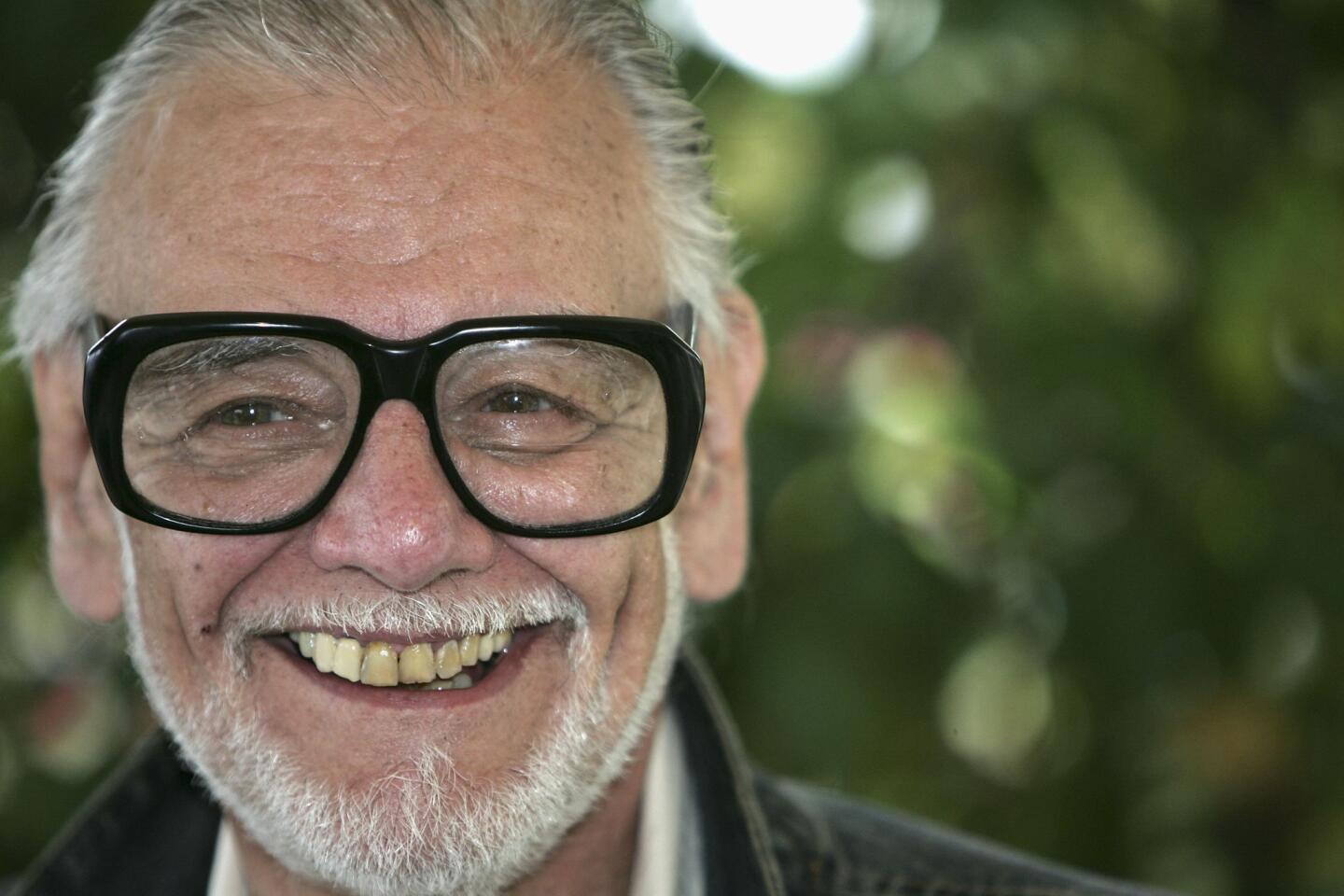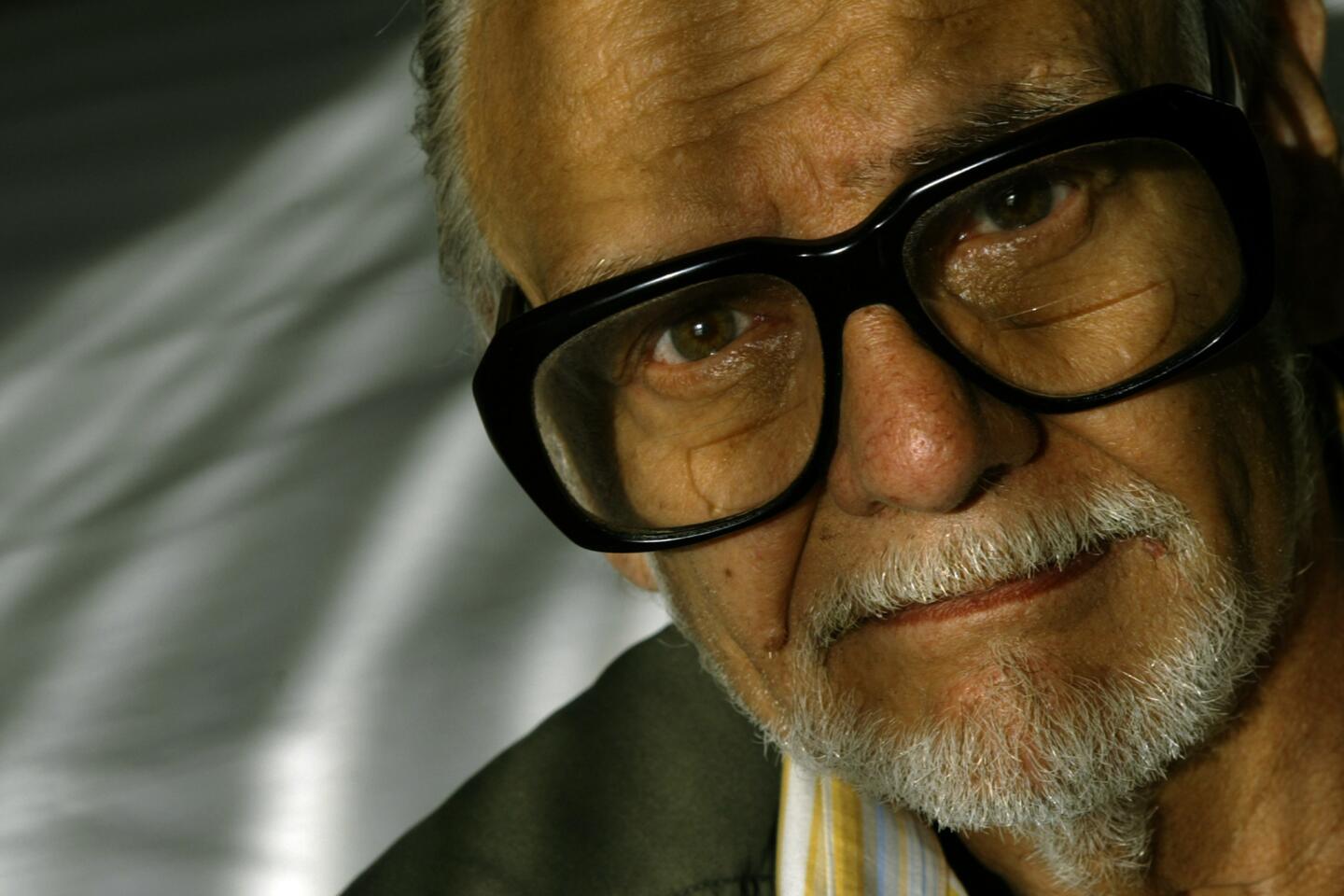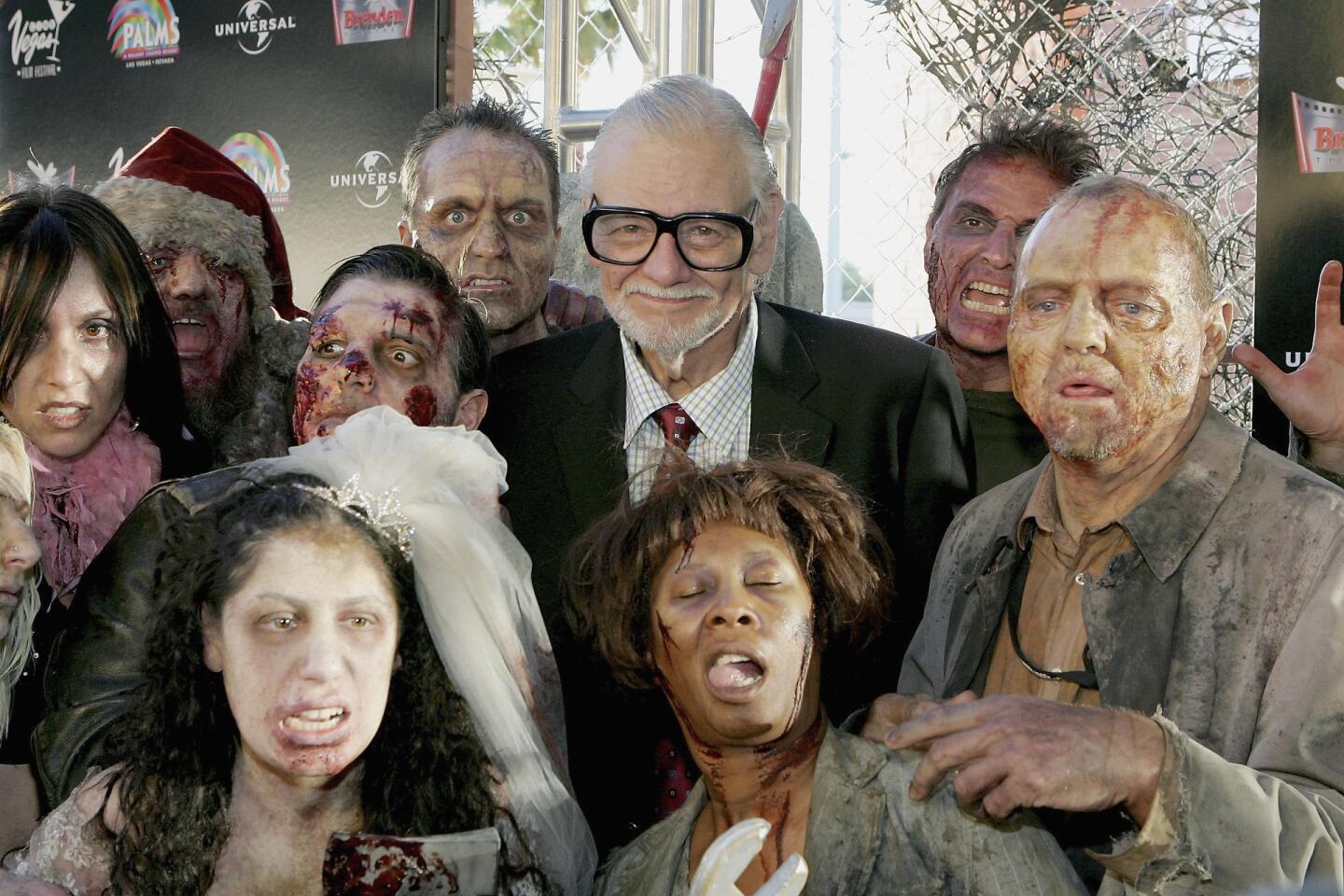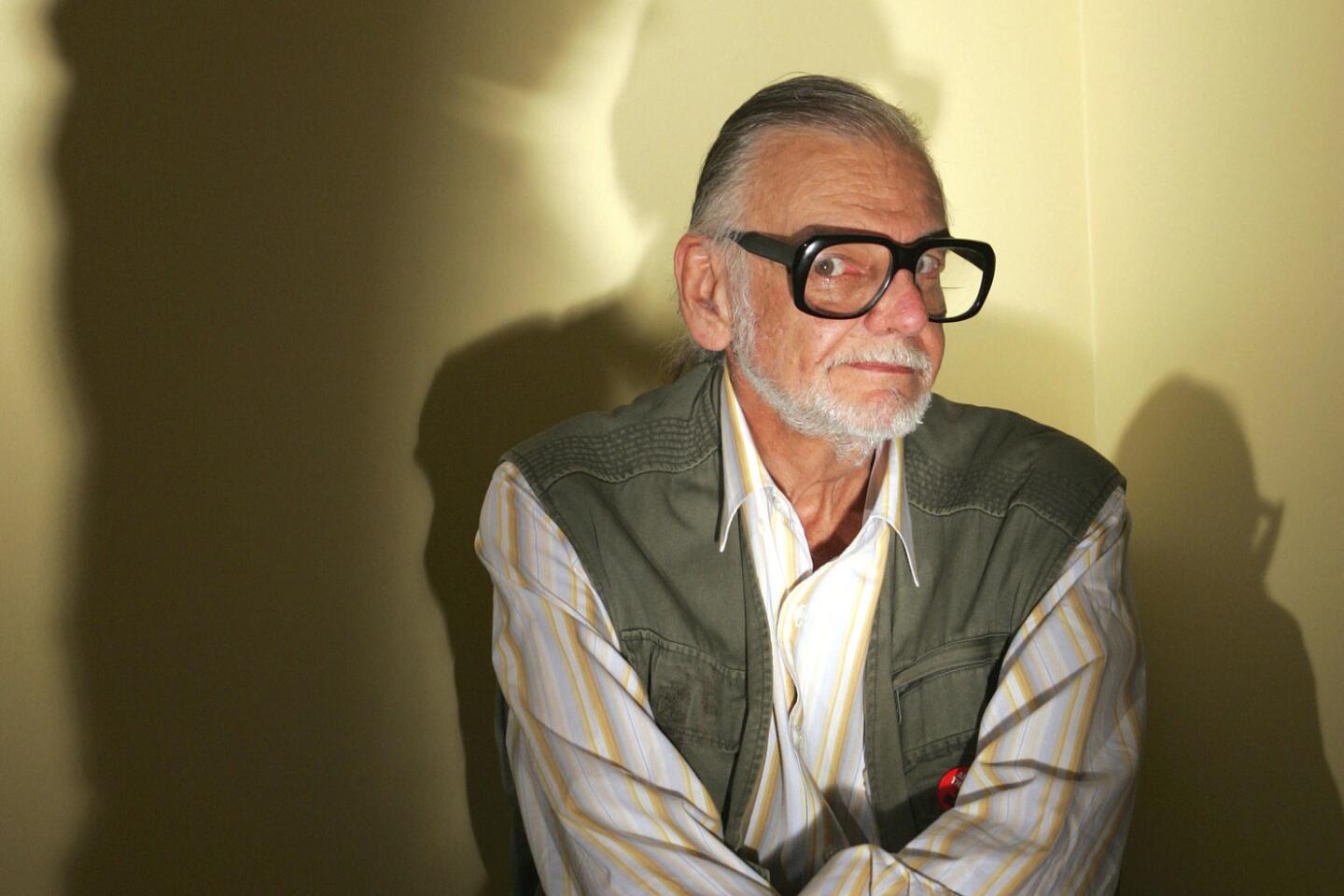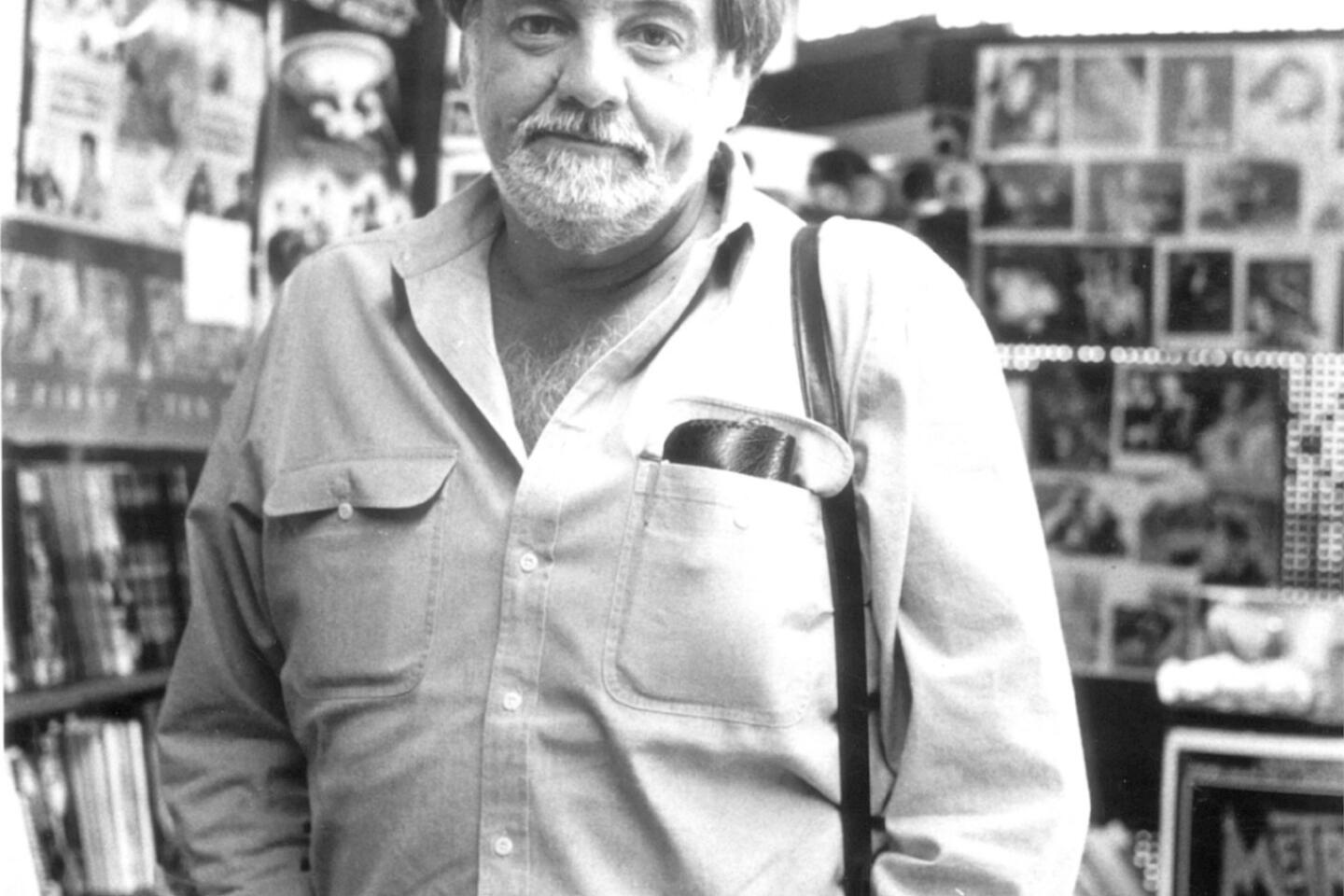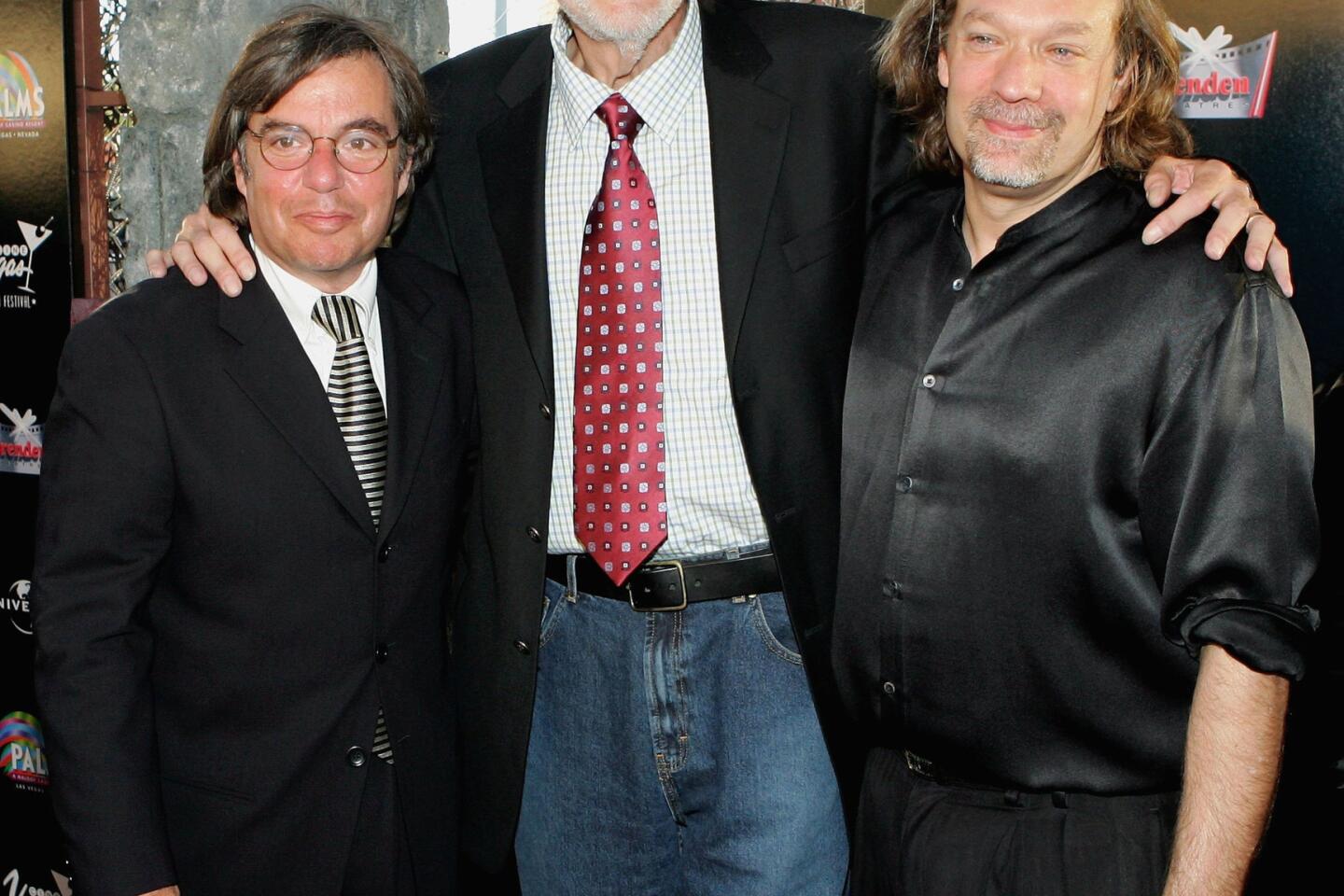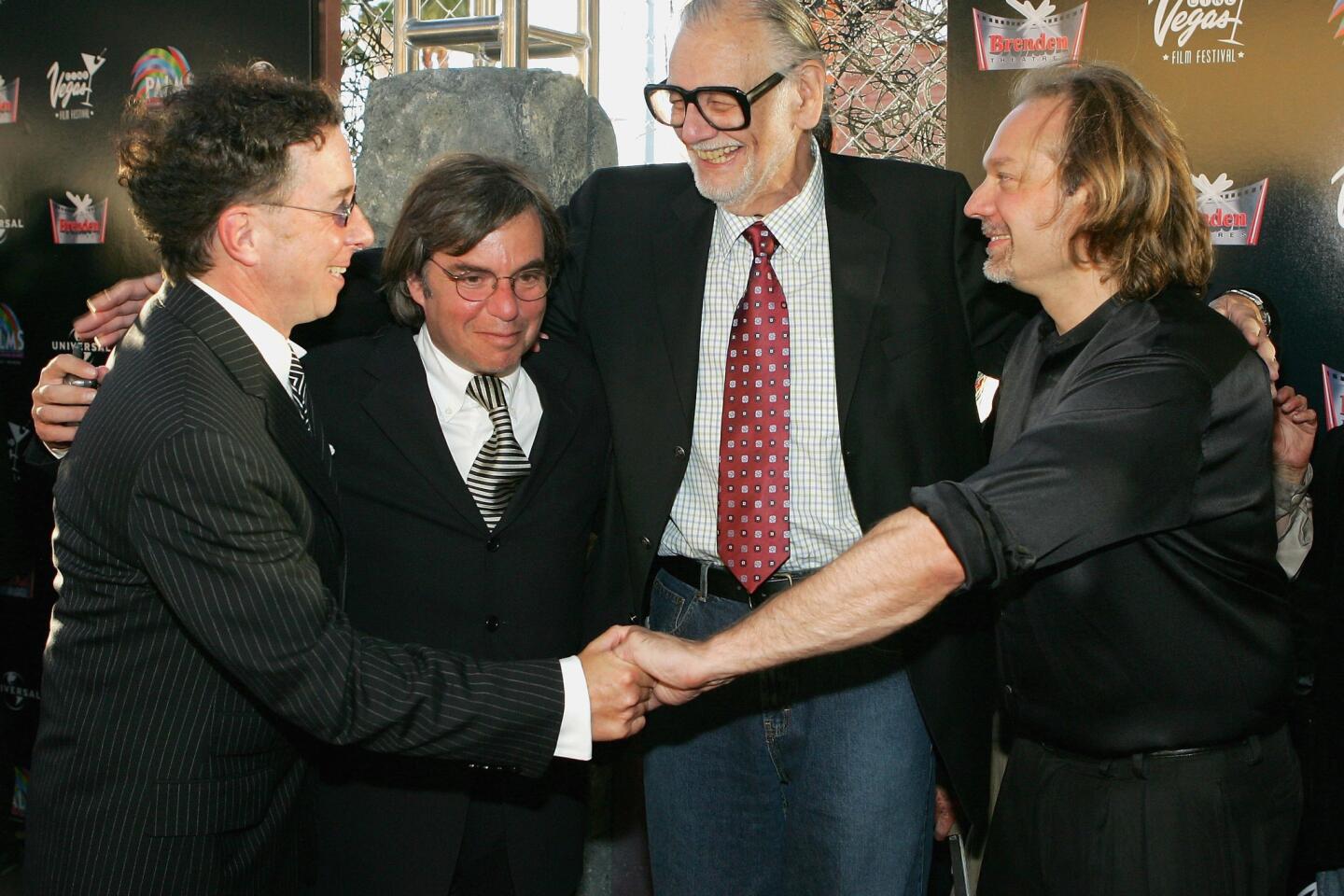George Romero, knight of the living dead, is a zombie specialist
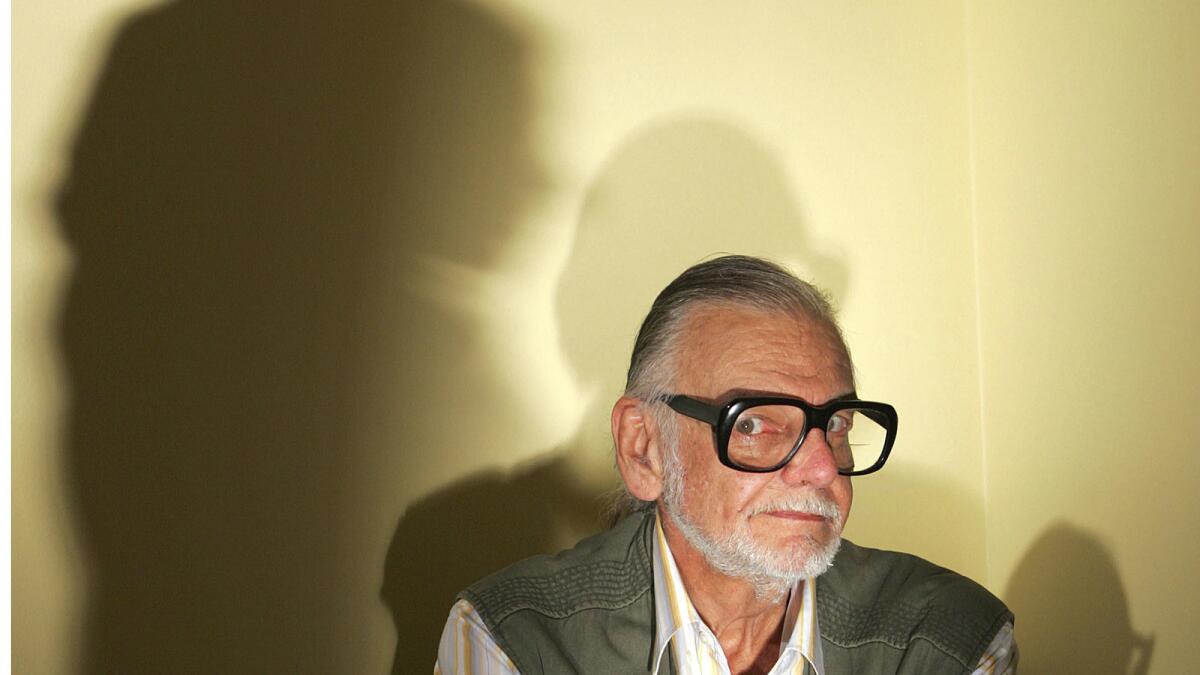
- Share via
Filmmaker George A. Romero died on July 16, 2017 at 77. Robert Abele wrote this Special to the Times report interviewing the influential horror master in 2005.
As he sips iced coffee in the restaurant of the Regent Beverly Wilshire hotel, filmmaker George Romero -- the father or, at 65, the grandfather of modern horror films -- admits what’s scaring him these days: June 24.
“It’s terrifying to be opening up in summer,” says Romero of his latest zombie opus, “Land of the Dead.” It hits theaters Friday -- 37 years after the debut of his seminal flesh-eating flick “Night of the Living Dead” and 20 years since his last undead venture, “Day of the Dead.”
Originally planned for a Halloween release, Universal bumped up the $18-million film as a sign of confidence in the highly anticipated gorefest. And although early reviews have been raves, Romero says, “I just hope it’s not too much of a specialty niche thing. We’re sandwiched between ‘Batman’ and ‘War of the Worlds.’ Gulp.”
Romero, a gangly, soft-spoken man with mad scientist-like black horn-rimmed glasses, has never had the rep of a journeyman scaremeister or no-holds-barred stylist, but instead that of a painterly satirist, a cinematic Bosch.
His zombie sagas, which also include the critically lauded 1979 masterpiece “Dawn of the Dead” (the remake of which was a hit last year), are splatter-happy and sweat-inducing survival dramas, but, as Romero says modestly, he likes “to throw in some observations about what’s going on in the world.”
“Night” evoked Vietnam-era bloodshed and, with its black male lead trapped in a farmhouse, echoed civil rights hysteria. “Dawn” poked fun at soul-deadening consumerism. And “Day” addressed ethics in science. With “Land,” Romero tackles issues of safety and boundaries, showing a community fortifying itself against a murderous horde while its wealthiest keep alive class divisions separating them from the powerless.
“It’s the folly of saying, ‘Everything’s OK, don’t worry about it,’ ” says Romero, who wrote “Land” before the events of Sept. 11. Its focus then was about “ignoring social ills, setting up a synthetic sense of comfort.”
He says he didn’t have to tweak it much to reflect new fears of terrorism. When told that it’s hard not to think of Iraq watching an armored car of trigger-happy humans roll through a zombiefied suburb shooting anything they see, Romero smiles. “That’s one of the things I put in there afterward.”
Producer Mark Canton, who quickly secured a deal at Universal for “Land” after it had languished at 20th Century Fox, says, “Once again, George has a lot of layers to this movie. It’s thoughtful, it’s societal, it’s political, and it’s very cool.... It’s the return of the master.”
There were the pilgrimages of fans trekking to Toronto last winter for the freezing, all-nights “Land” shoot to fulfill lifelong dreams of being a Romero zombie. Two of those were Edgar Wright and Simon Pegg, who created last year’s respectful zombie spoof “Shaun of the Dead,” which Romero loved. “They’re the zombies at the photo booth,” tips Romero to their cameo in the film. “They shot their own little film [while] on set, and it’s going to be on the DVD.”
Romero is busily assembling the unrated DVD edition, so although the R-rated theatrical release has plenty of the crunchy, squishy, visceral extravagance that is the hallmark of a “Dead” movie, the carnage will linger a bit longer for home video.
Until “Land,” Romero’s MPAA dealings were few -- his zombie movies typically go out unrated. And when the MPAA did get involved, it inevitably became about frame counts, something Romero is still puzzled by. “An old film I made called ‘Martin,’ there’s a scene where Martin cuts a woman’s wrist, and it took 28 frames. They said, ‘Make it 17 frames.’ Is that going to protect anyone’s innocence?... Either take it out or leave it in.”
His is an old-fashioned soul, though, when it comes to what he calls “the personality of horror.” “Land” even opens with Universal’s ‘30s-era black-and-white logo, a touch Romero requested as a signal that he aligns himself with the studio’s heyday of Frankenstein, Dracula and the Mummy, pictures he first saw as a kid in Bronx movie theaters. (He’s lived in Pittsburgh since college.)
And although he found last year’s “Dawn” remake “pretty well-made,” he dismisses the new vogue of sprinting zombies, a feature of “28 Days Later,” the 2003 movie that sparked the zombie resurgence.
“I grew up on these slow-moving-but-you-can’t-stop-them [creatures], where you’ve got to find the Achilles’ heel, or in this case, the Achilles’ brain,” he says, referring to the organ whose destruction waylays a zombie. “In [the remake] they’re just dervishes, you don’t recognize any of them, there’s nothing to characterize them.... [But] I like to give even incidental zombies a bit of identification. I just think it’s a nice reminder that they’re us. They walked out of one life and into this.” (One of the lead zombies in “Land” is a former gas station attendant.)
In Romero’s world, the extras are the leads, and the scariest idea in “Land” might be just how much he doesn’t take them for granted.
“I’m focused on advancing them mentally,” he adds, referring to ways he envisions the franchise continuing. “I say jokingly that my guys will take out library cards before they join a gym.”
See the most-read stories in Entertainment this hour >> »
MORE ON ROMERO:
George Romero: Movies ‘are not perceived as an art form by the industry’ »
George A. Romero, ‘Night of the Living Dead’ creator, dies at 77 »
George Romero’s undead reckoning »
George Romero dismisses ‘The Walking Dead’ as ‘soap opera’ »
More to Read
Only good movies
Get the Indie Focus newsletter, Mark Olsen's weekly guide to the world of cinema.
You may occasionally receive promotional content from the Los Angeles Times.
